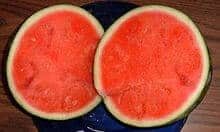journal of agricultural and food chemistry
High vitamin-D bread could help solve widespread insufficiency problem
With most people unable to get enough vitamin D from sunlight or foods, scientists are suggesting that a new vitamin D-fortified food — bread made with high-vitamin D yeast — could fill that gap. Their study, confirming that the approach works…
New explanation for heart-healthy benefits of chocolate
WASHINGTON, Feb. 7, 2011 — In time for the chocolate-giving and chocolate-noshing fest on Valentine’s Day, scientists are reporting discovery of how this treat boosts the body’s production of high-density lipoprotein cholesterol (HDL) — the “g…
Vegans’ elevated heart risk requires omega-3s and B12
People who follow a vegan lifestyle — strict vegetarians who try to eat no meat or animal products of any kind — may increase their risk of developing blood clots and atherosclerosis or “hardening of the arteries,” which are conditions that ca…
Shoo fly: Catnip oil repels bloodsucking flies
Catnip, the plant that attracts domestic cats like an irresistible force, has proven 99 percent effective in repelling the blood-sucking flies that attack horses and cows, causing $2 billion in annual loses to the cattle industry. That’s the word fr…
Waterhemp rears its ugly head … again
Waterhemp has done it again. University of Illinois researchers just published an article in Pest Management Science confirming that waterhemp is the first weed to evolve resistance to HPPD-inhibiting herbicides.
“A fifth example of resistanc…
Organic onions, carrots and potatoes do not have higher levels of healthful antioxidants
With the demand for organically produced food increasing, scientists are reporting new evidence that organically grown onions, carrots, and potatoes generally do not have higher levels of healthful antioxidants and related substances than vegetables…
New Year’s Eve tip from American Chemical Society journal: Pour champagne down the side of the glass
WASHINGTON, Dec. 22, 2010 — Just in time for New Year’s Eve, and the arrival of the International Year of Chemistry, a study may settle that long-standing disagreement over the best way to pour a glass of champagne: Scientists in France are report…
Cilantro ingredient can remove foul odor of holiday chitlins
With chitlins about to make their annual appearance on Christmas and New Year’s Day menus, scientists have good news for millions of people who love that delicacy of down-home southern cooking, but hate the smell. They are reporting the first identi…
Shoo, fly! Catnip oil repels bloodsucking flies
Catnip, the plant that attracts domestic cats like an irresistible force, has proven 99 percent effective in repelling the blood-sucking flies that attack horses and cows, causing $2 billion in annual loses to the cattle industry. That’s the word fr…
Levels of coumarin in cassia cinnamon vary greatly even in bark from the same tree
A “huge” variation exists in the amounts of coumarin in bark samples of cassia cinnamon from trees growing in Indonesia, scientists are reporting in a new study. That natural ingredient in the spice may carry a theoretical risk of causing liver …
Concerns about the safety of certain ‘healthful’ plant-based antioxidants
Scientists are calling for more research on the possibility that some supposedly healthful plant-based antioxidants — including those renowned for their apparent ability to prevent cancer — may actually aggravate or even cause cancer in some i…

